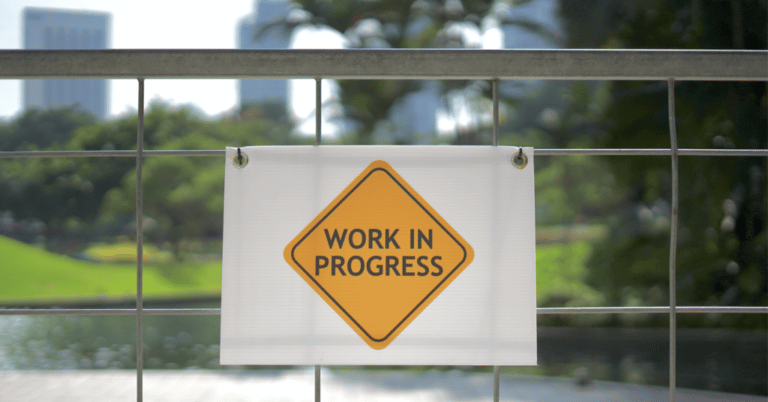At the start of last year, 17,000 12- and 13-year-olds walked into high school classrooms all across the country unable to read even at a minimal level. They achieved scores below the minimum standard in the Year 7 National Assessment Program — Literacy and Numeracy reading test. A further 35,000 students achieved only the minimum standard, in which they can barely find basic information in simple written text.
Similar numbers of students achieved at and below the minimum standard in Year 5 in 2017 and in Year 3 in 2015, indicating their literacy difficulties had been identified but never remediated.
For these students the challenge of remote learning without the support of their teachers and peers would have been frustrating and probably futile.
It is not as if evidence-based early reading instruction is a mystery. A recent Florida State University report by a group of eminent reading researchers states: “Decades of basic research and randomised controlled trials of interventions and instructional routines have formed a substantial evidence base to guide best practices in reading instruction, reading intervention, and the early identification of at-risk readers.”
This evidence base is accessible to everyone and definitively shows that learning to read requires knowledge of the relationship between spoken and written words — phonics — and a rich understanding of language. Neither is sufficient alone. Research also shows that children acquire this knowledge and skill most successfully through explicit and systematic instruction from the beginning of the first year at school. A particular form of instruction called systematic synthetic phonics is underpinned by the strongest evidence.
Nobody disputes the language element of literacy. The “reading wars” instead have been about how to teach beginning readers to translate print into words, that is, to decode words using phonics. In terms of the scientific research literature, the war is purely historical. There is no doubt that beginning readers must learn phonic decoding. This is a more difficult task in English than many other alphabetic languages because its spelling system is more complex, but this just makes methodical and systematic instruction even more crucial.
Yet in many schools, students are not being taught to decode words accurately using phonics. Children are told they can work out how to read an unknown word using cues, including the pictures. The three cueing, multi-cueing, or M-S-V (which stands for meaning, structure, visual information) method encourages children to predict what the word may be using the context of the word, the picture and the first letter. This method has been shown to lead to slower and more error-prone reading.
Poor readers use non-phonic cues to engage in what whole-language guru Ken Goodman called a “psycholinguistic guessing game”, while proficient readers read the actual word using its phonic properties. When they have read a word this way several times it becomes a “sight word” and they read it automatically and fluently. No guessing game is necessary, psycholinguistic or otherwise.
Don’t be fooled by reassurances that students are learning “phonics in context” or as a “balanced literacy” diet. Both are euphemisms for a non-systematic, non-evidence-based approach. Teaching children phonics explicitly and systematically includes using decoding skills in the context of reading for meaning — which is the ultimate aim — but the difference is that it also teaches children about the abstract aspect of reading, because that is the nature of written text.
The alphabet is an abstract code devised so spoken language can be transcribed. The same way that maths requires children to know that numbers have a symbol, a name, and represent a value, learning to read requires children to know that letters have a symbol, a name, and represent one or more speech sounds. These letters and speech sounds combine in a limited number of ways to make words.
During the past decade, policy and practice has gradually begun to reflect scientific reading research. Policy change is often driven by exemplary practice at the school level by teachers who have taken considerable time to develop their own programs or have adopted a tried-and-tested published program. However, progress is patchy and far too slow.
At the national level, the essential subskills involved in early reading development have been expanded considerably in the Australian curriculum since its first iteration, largely thanks to the 2014 curriculum review.
The National Literacy Learning Progressions published in 2018 provide a research informed sequence of knowledge and skill development for teaching phonics and other essential elements of reading. The definition of decoding in the Australian curriculum now aligns with the usage of that term in scientific reading research.
The Australian government is developing an online phonics assessment tool for schools to use. And, significantly, the Education Council last year endorsed specific requirements for universities to include evidence-based reading instruction, including phonics, in teacher education degrees.
Some states have embraced evidence-based practice more than others. South Australia introduced a Year 1 phonics check in 2018 after a successful trial the year before, complemented by high-quality professional learning and published guidance on reading instruction for teachers.
The Year 1 phonics check will be trialled in NSW later this year. More than 200 schools will be participating voluntarily in the trial. The NSW Department of Education and Association of Independent Schools of NSW have been providing professional learning for teachers in evidence-based reading instruction for the past several years. The NSW Centre for Education Statistics and Evaluation has published rigorous evidence summaries and studies.
In Western Australia, numerous schools are using explicit early reading instruction in the cities and in remote schools, notably through the Fogarty Foundation’s EDvance project and the Kimberley Schools Project. Explicit and systematic reading programs are being used with success in many schools in the Northern Territory and north Queensland.
Unfortunately, however, the advice on some state government education websites does not help teachers to provide the most effective reading instruction. The Victorian Department of Education and Training’s Literacy Teaching Toolkit promotes a “balanced literacy” approach. It says the right things about using explicit instruction in phonics but betrays a lack of understanding or commitment to this method by providing example lesson activities that draw on the three cueing or “phonics in context” model, where decoding a word is the strategy of last resort when it should be foremost.
The research and teaching community knows a lot about how children learn to read and how best to teach them. Some outstanding schools are working in advance of, and leading, governments and universities. But there are still some balanced literacy bastions holding out against evidence-based practice and mixed messages causing confusion and delaying improvement.
As US education expert Chester Finn Jr wrote: “The path to consensus via science is rarely straight; it can take years to achieve and the battles can be bloody. But, eventually, the accumulation of evidence is hard, even impossible, to ignore.” As children return to school after months of curtailed learning, putting this accumulated evidence to provide the most efficient and effective instruction and intervention will be even more critical.
This article was published in the Weekend Australian, May 23-24, 2020
https://www.theaustralian.com.au/inquirer/children-lost-between-the-lines-long-before-high-school/news-story/a089d5c01cab1080334893719738fadf




